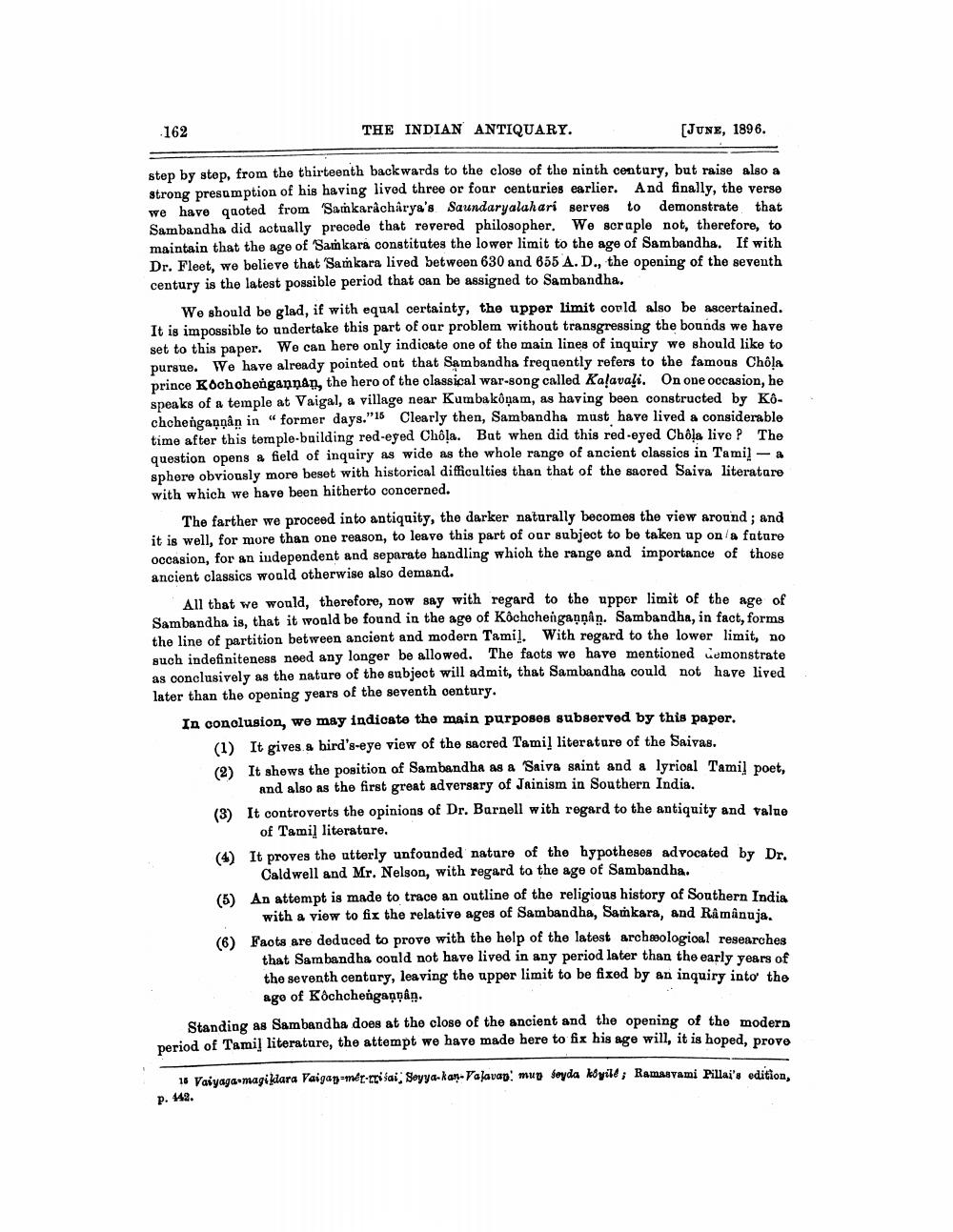________________
162
THE INDIAN ANTIQUARY.
(JUNE, 1896.
step by step, from the thirteenth backwards to the close of the ninth century, but raise also a strong presumption of his having lived three or foar centuries earlier. And finally, the verse we have quoted from Samkaracharya's Saundaryalahari serves to demonstrate that Sambandha did actually precede that revered philosopher. We scraple not, therefore, to maintain that the age of 'Samkara constitutes the lower limit to the age of Sambandha. If with Dr. Fleet, we believe that 'Saṁ kara lived between 630 and 655 A. D., the opening of the seventh century is the latest possible period that oan be assigned to Sambandha.
We should be glad, if with equal certainty, the upper limit could also be ascertained. It is impossible to undertake this part of our problem without transgressing the bounds we have set to this paper. We can here only indicate one of the main lines of inquiry we should like to pursue. We have already pointed out that Sambandha frequently refers to the famous Chola prince Kochohengannan, the hero of the classical war-song called Kalavali. On one occasion, he speaks of a temple at Vaigal, a village near Kumbakonam, as having been constructed by Kochchengannan in " former days."15 Clearly then, Sambandha must have lived a considerable time after this temple-building red-eyed Chôla. But when did this red-eyed Chola live P The question opens a field of inquiry as wide as the whole range of ancient classics in Tamil - A sphere obviously more beset with historical difficulties than that of the sacred Saiva literature with which we have been hitherto concerned.
The farther we proceed into antiquity, the darker naturally becomes the view around, and it is well, for more than one reason, to leave this part of our subject to be taken up on a future occasion, for an independent and separate handling which the range and importance of those ancient classics would otherwise also demand.
All that we would, therefore, now say with regard to the upper limit of the age of Sambandha is, that it would be found in the age of Kôchchenganpin. Sambandha, in fact, forms the line of partition between ancient and modern Tamil. With regard to the lower limit, no such indefiniteness need any longer be allowed. The facts we have mentioned uumonstrate as conclusively as the nature of the subject will admit, that Sambandha could not have lived later than the opening years of the seventh century. In conclusion, we may indicate the main purposes subserved by this paper.
(1) It gives a bird's-eye view of the sacred Tamil literature of the Saivas. (2) It shows the position of Sambandha as a Saiva saint and a lyrical Tamil poet,
and also as the first great adversary of Jainism in Southern India. (3) It controverts the opinions of Dr. Barnell with regard to the antiquity and value
of Tamil literature. (4) It proves the utterly unfounded nature of the hypotheses advocated by Dr.
Caldwell and Mr. Nelson, with regard to the age of Sambandha. (5) An attempt is made to trace an outline of the religious history of Southern India
with a view to fix the relative ages of Sambandha, Sankara, and Râ mânuja. (B) Pasta are deduced to prove with the help of the latest archeologioal researches
that Sambandha could not have lived in any period later than the early years of the seventh century, leaving the upper limit to be fixed by an inquiry into the
age of Kochchengantân. Standing as Sambandha does at the close of the ancient and the opening of the modern period of Tamil literature, the attempt we have made here to fix his age will, it is hoped, provo
16 Vaiyaga-magiklara Vaigay-mér-brisai, Soyya-kar-Valavap: mur Seyda köyile; Ramasami Pillai's edition.
p. 142.




